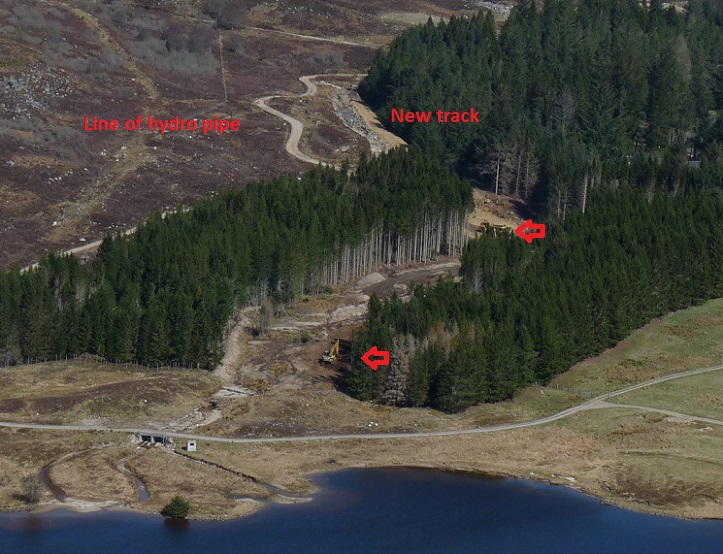
The Gynack flood alleviation channel was constructed in 2017 and started to erode away as soon as it was used before it was closed due to the risks of catastrophic failure (see here). Ostensibly designed to reduce flood risks in Kingussie by diverting some of the flow of the Allt Mhor into Loch Gynack, the wrecked channel has been sitting unused ever since (except for a burn that flows into it below the intake).

Five years later and neither Highland Council nor the Cairngorms National Park Authority (CNPA) have conducted an inquiry into what went wrong. That is despite Highland Council having paid the Pitmain Estate half the costs of constructing the scheme (around £124k) and despite the CNPA having granted planning permission for something that has turned out to be completely unfit for purpose and left a large landscape scar.
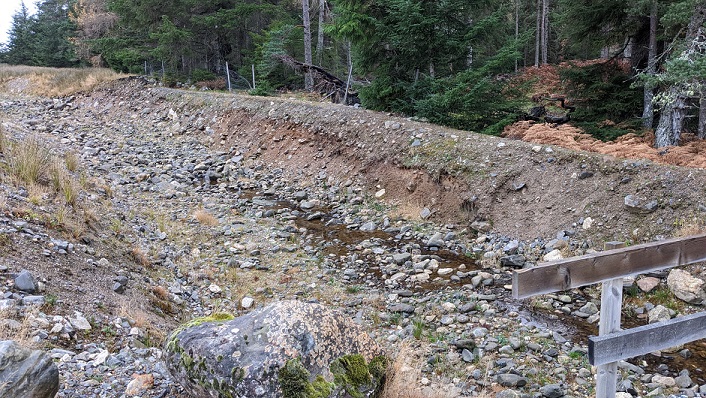
The worst design flaw was the proposal that an embankment, a heaped up bank of material, should be used to form the true left-hand side of the channel and would be able to withstand the erosive force of the water when in flood.
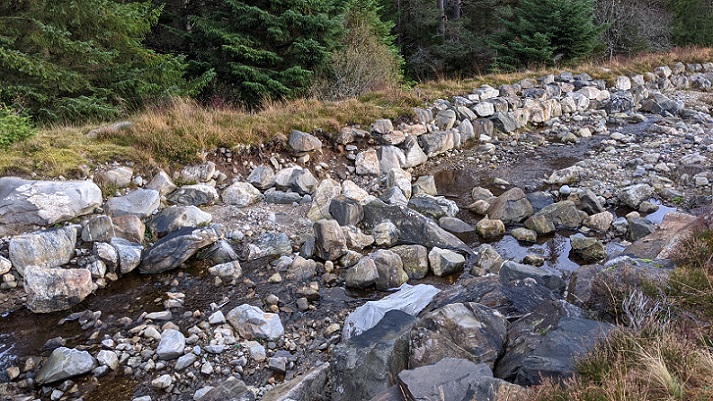
While some of the embankment was reinforced with rip rap bouldering, as with several run of river hydro schemes (see here), that also proved unfit for purpose. The basic problem is that when a river is in flood, water is forced behind the boulders and prises them away from the bank. Grassy river banks resist flood water quite effectively. By contrast where soil is exposed between or below boulders it is likely to be subject to severe erosion:
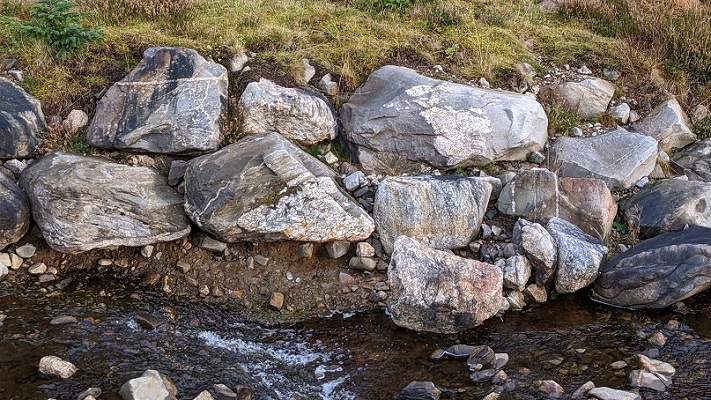
Other parts of the embankment were perhaps more obviously unfit for purpose, particularly the sections constructed out of peaty soil:
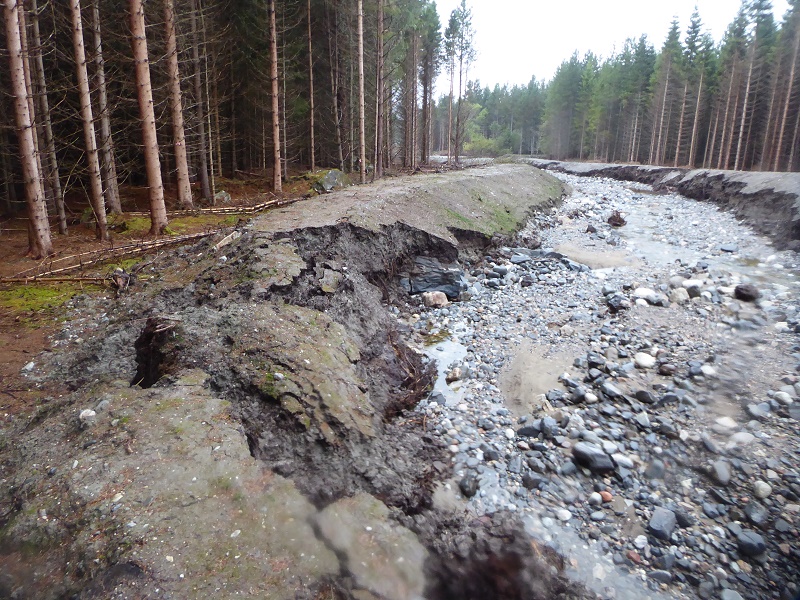
Since the channel was blocked off, some sections of the peaty embankment have vegetated and might now be better able to withstand flood water but the damaged sections with exposed sections of peat are highly vulnerable to further erosion:
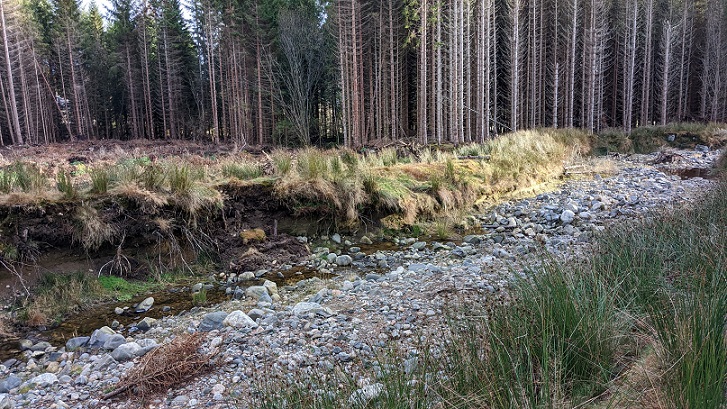
Instead of trying to learn from these mistakes or taking take action, both Highland Council and the CNPA appear to have sat back and waited for the Pitmain Estate to resolve the issues. The Pitmain Estate, meantime, appear to have decided to sue the designer of the scheme and, after he died, his estate. Why, however, the Jafur Family, who own both the Pitmain and Glen Banchor Estates and appear to be extremely rich, would need to sue the designer before taking any remedial action and why they, Highland Council and the CNPA would leave the local community in Kingussie at risk is unclear.
Why too the Pitmain Estate appear to have decided to sue the designer but not the contractor, McGowan, is also unclear. Perhaps McGowan alerted them that the peaty sections of embankment were a disaster waiting to happen but were told to carry on regardless?
Having decided to sue the designer, however, the Pitmain Estate have clearly come to the conclusion the original design was not fit for purpose and the implication is that they will have decided a new design was required. That would at the very least require the Pitmain Estate to submit revised plans to the CNPA but might require a new planning application, depending on the extent of the changes proposed.
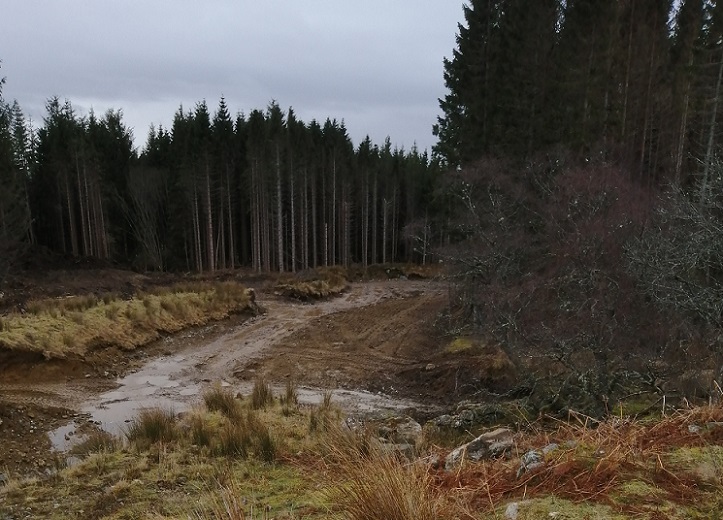
Judging by the new tracks shown in the top photo and that above, the impact and the extent of the works is such that full planning permission should have been required.
When I became aware of the works, I check the CNPA planning portal (see here) but no new papers had been added to the application since October 2017. I then emailed the CNPA asking if they had agreed the work only to be told on 6th April that they knew nothing about it and “would look into it”.
What needs to happen
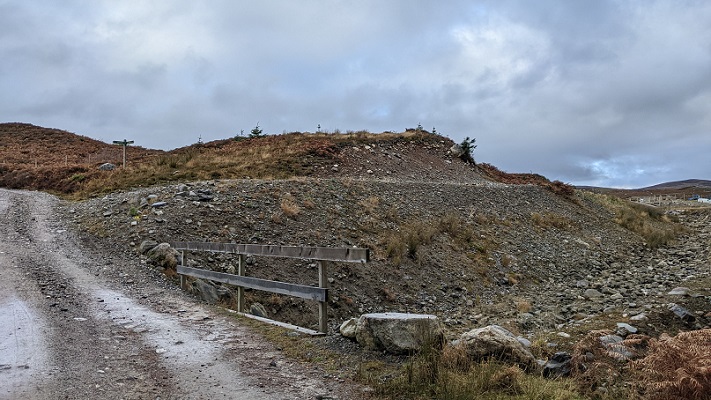
There is no doubt that the Gynack flood alleviation channel needs to be fixed or, if it can’t, the land restored to its original state. The Pitmain Estate has had four years now to come up with a plan to do so and has had plenty of time to discuss that with the CNPA. Instead, it has ignored the CNPA and just gone ahead, appointed a new contractor and commenced the work.
In my view the CNPA is partly responsible for this debacle. Whatever the complexities of redesigning the channel to get it working, as soon as work on the scheme had finished it was clear that some of the work was not of an acceptable standard – as in the landscape sore in the photo above. Had the CNPA taken enforcement action on such issues, the Pitmain Estate might have taken it a bit more seriously. Instead, it clearly now believes it can more or less do what it likes.
It may be that the new contractor has the skill and competence to fix the overflow in ways that are compatible with the policies and plans of the CNPA but they should have checked the necessary permissions were in place before starting work. Given, however, that this scheme was developed and approved on the basis that it would help protect parts of Kingussie from flooding and given the public funding that has been wasted to date, the very least that anyone should expect is that the Pitmain Estate, besides employing suitable contractors, has commissioned plans from people with appropriate expertise who can show that the new design will work. That should be done through the planning system where such plans can be subject to public scrutiny.
The CNPA have the power to issue a stop notice, a statutory order requiring work on a development to stop, and in my view should have used it to prevent any further work being done on the Gynack overflow until they had been provided with and agreed plans. Only when they start using such powers will landed estates start to take the CNPA seriously. Had the CNPA investigated this case promptly, any enforcement action would have had to be reported to the planning committee which is today taking a decision on the Pitmain Estate’s proposal to build a 4.83km link road to Glen Banchor (see here). The reaction of Board Members would have been worth seeing!

The CNPA doesn’t have a contract with the designer – it has a contract with the Pitmain Estate. So it’s irrelevant what the estate is up to suing the designer. CNPA should have been pursuing the Estate for remediation independently. The fact that they haven’t just highlights who has the power here – the land owner. This has always been a fundamental flaw in the way that Scotland’s national parks have been set up. The power balance needs to swing to the public and our national park – otherwise what’s the point?
I believe CNPA has the powers to enforce the remediation of the failed project. The main problem is that CNPA has, over many years, shown a disgraceful reluctance to enforce its planning powers. Yes, the first action should be gentle persuasion to rectify, but soon after that CNPA should put in place enforcement action, backed up where necessary by legal action. CNPA is too often just a ‘paper tiger’ when it comes to environmental controls, and the delinquent landowners and their managers know it